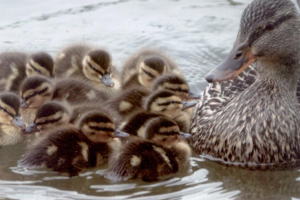Ducks role in Chinese bird flu outbreak probed

Ducks, which picked up viruses from migrating birds and passed them onto chickens, were the instigators of the new strain of bird flu which emerged in China early this year, Chinese scientists tracking the evolution of the virus have determined.
The team, including researchers at the Shantou University Medical College, were trying to trace the root of the outbreak and concluded that humans were probably then infected with H7N9 due to contact with chickens at live poultry markets. So far there have been 133 human cases of the bird flu and 43 deaths.
In the study, published in the journal Nature, samples were taken from 1,341 chickens, ducks, geese, pigeons, partridges and quail as well as faecal and water samples from live poultry markets.
By comparing the similarities and differences between the genetic codes of influenza viruses in each of the animals, scientists could work out how the virus evolved and spread.
“Domestic ducks seem to act as key intermediate hosts by acquiring and maintaining diverse influenza viruses from migratory birds,” the report stated.
“This probably led to outbreaks in chickens resulting in the rapid spread of the [virus] through live poultry markets which became the source of human infections. To control H7N9 and related viruses ultimately it is necessary to reconsider the management of live poultry markets in urban areas.”
Commenting on the research, Dr Peter Horby, from the Oxford University Clinical Research Unit in Vietnam, said: “Whilst this brings us closer to understanding the pathway to emergence, more detective work is needed to fully reveal the ecology and source of H7N9 viruses, which seem to be concentrated in live poultry markets but elusive elsewhere in the production chain.”













